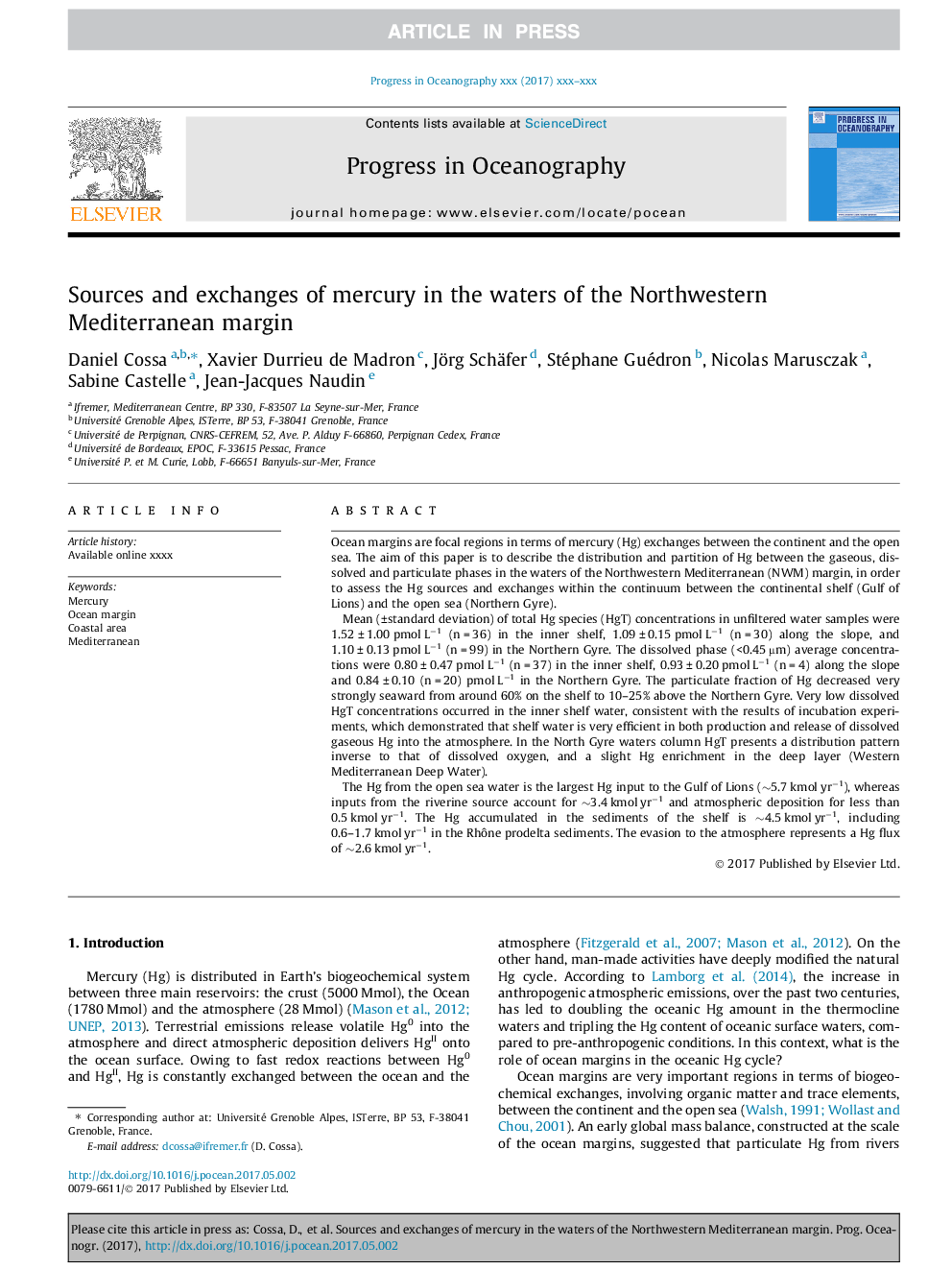| Article ID | Journal | Published Year | Pages | File Type |
|---|---|---|---|---|
| 8886670 | Progress in Oceanography | 2018 | 12 Pages |
Abstract
The Hg from the open sea water is the largest Hg input to the Gulf of Lions (â¼5.7 kmol yrâ1), whereas inputs from the riverine source account for â¼3.4 kmol yrâ1 and atmospheric deposition for less than 0.5 kmol yrâ1. The Hg accumulated in the sediments of the shelf is â¼4.5 kmol yrâ1, including 0.6-1.7 kmol yrâ1 in the Rhône prodelta sediments. The evasion to the atmosphere represents a Hg flux of â¼2.6 kmol yrâ1.
Related Topics
Physical Sciences and Engineering
Earth and Planetary Sciences
Geology
Authors
Daniel Cossa, Xavier Durrieu de Madron, Jörg Schäfer, Stéphane Guédron, Nicolas Marusczak, Sabine Castelle, Jean-Jacques Naudin,
